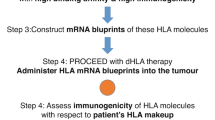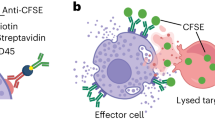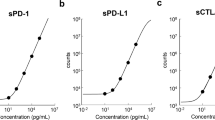Abstract
The leucocyte adherence inhibition (LAI) test, previously described for the detection of cell mediated immunity and serum blocking factors associated with murine tumours, has now been adapted for use with human cancer patients. Blood leucocytes from these patients, mixed in vitro with antigenic extracts of tumours of the same type, had their normal adherence to glass surfaces diminished. This inhibition was reversed (blocked) by the addition of the patients' own sera. Both LAI and blocking were tumour-type specific, but showed complete cross-reactivity within each type of tumour (melanoma, colon carcinoma, mammary carcinoma).
The LAI test could be of great value in diagnosis and evaluation of treatment, since it seems to reproduce consistently the findings made by more elaborate techniques but has the advantage of being simple, rapid and inexpensive.
This is a preview of subscription content, access via your institution
Access options
Subscribe to this journal
Receive 24 print issues and online access
$259.00 per year
only $10.79 per issue
Buy this article
- Purchase on Springer Link
- Instant access to full article PDF
Prices may be subject to local taxes which are calculated during checkout
Similar content being viewed by others
Rights and permissions
About this article
Cite this article
Halliday, W., Maluish, A. & Isbister, W. Detection of Anti-tumour Cell Mediated Immunity and Serum Blocking Factors in Cancer Patients by the Leucocyte Adherence Inhibition Test. Br J Cancer 29, 31–35 (1974). https://doi.org/10.1038/bjc.1974.4
Issue Date:
DOI: https://doi.org/10.1038/bjc.1974.4
This article is cited by
-
The role of interleukin-1 in general pathology
Inflammation and Regeneration (2019)
-
Adjuvant treatment of colorectal cancer
Cancer Chemotherapy and Pharmacology (1985)



